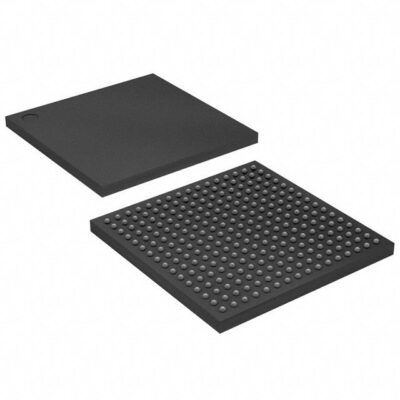10M16DCF256I7G
Part Number: 10M16DCF256I7G
Manufacturer: Intel
Description: IC FPGA 178 I/O 256FBGA
Shipped from: Shenzhen/HK Warehouse
Stock Available: Check with us
ICRFQ.com - Electronic Components Distributor in China Since 2003

Part Number: 10M16DCF256I7G
Manufacturer: Intel
Description: IC FPGA 178 I/O 256FBGA
Shipped from: Shenzhen/HK Warehouse
Stock Available: Check with us
| Datasheet | |
|---|---|
| Category | Integrated Circuits (ICs) |
| Family | Embedded – FPGAs (Field Programmable Gate Array) |
| Manufacturer | Altera |
| Series | MAX? 10 |
| Part Status | Active |
| Number of LABs/CLBs | 1000 |
| Number of Logic Elements/Cells | 16000 |
| Total RAM Bits | 562176 |
| Number of I/O | 178 |
| Number of Gates | – |
| Voltage – Supply | 1.15 V ~ 1.25 V |
| Mounting Type | Surface Mount |
| Operating Temperature | -40°C ~ 100°C (TJ) |
| Package / Case | 256-LBGA |
| Supplier Device Package | 256-FBGA (17×17) |
FPGAs (Field Programmable Gate Arrays) have changed the world of technology because they can be used in many different ways and can be changed to fit different needs. Among these, the Intel MAX 10M16DCF256I7G stands out as a unique device with a special set of features and abilities. In this detailed guide, we’ll look at the Intel MAX 10M16DCF256I7G FPGA’s best features, uses, and benefits.
The Intel MAX 10M16DCF256I7G is a low-cost, non-volatile, single-chip programmable logic device (PLD) that makes it easy to connect system parts. It fits a lot of features and functions into a small package, which makes it a popular choice for many different uses.
The Intel MAX 10M16DCF256I7G FPGA has a unique feature called Dual Configuration Flash that makes it much more flexible and reliable. The FPGA can keep and manage two different configurations because it has its own flash memory. The main benefit of this is that you can switch between two different designs or firmware pictures at any time.
The User Flash Memory is another important part of the Intel MAX 10M16DCF256I7G FPGA. It gives the user a place to store data and settings that are unique to them. With this memory block, developers can keep important data, calibration data, or custom settings right on the FPGA.
The Intel MAX 10M16DCF256I7G FPGA has a feature called “Instant on Support” that lets the device turn on quickly and work almost as soon as it is turned on. This feature gets rid of the need for time-consuming boot sequences, which makes it very helpful for some apps.
Analog-to-Digital Converters (ADCs), which are built into the Intel MAX 10M16DCF256I7G FPGA, are a key part of interfacing with analog signals and sensors straight from the FPGA.
The Intel MAX 10M16DCF256I7G FPGA works with the Nios II soft core processor, which provides a flexible and adjustable way to handle processing right in the FPGA fabric.
The Intel MAX 10M16DCF256I7G FPGA is used in many different fields and businesses. Some of the most important uses are:
The FPGA is a great tool for system management jobs because it can be easily integrated and has many different uses. It can be used to do things like watch the system, control the power, and find problems.
The Intel MAX 10M16DCF256I7G FPGA is useful when more input/output ports are needed. Because it can be programmed, designers can change the I/O growth to meet the needs of the application.
The FPGA is a good choice for communication control planes because it is flexible and can handle complex communication protocols. Whether it’s Ethernet, USB, or another serial link, the FPGA can handle the flow of data and processing in an effective way.
The Intel MAX 10M16DCF256I7G FPGA is good for industrial and automotive applications because it is durable, uses little power, and can work in harsh conditions. Some of these are motor control, workplace automation, and electronic control units (ECUs) for cars.
The FPGA can be used for a wide range of jobs in consumer electronics, such as audio and video processing, customizing the user interface, and IoT (Internet of Things) applications.
The Intel MAX 10M16DCF256I7G FPGA is a breakthrough in programmable logic devices, offering impressive features for diverse applications. Its dual configuration flash, user flash memory, instant-on support, integrated ADCs, and Nios II soft core processor compatibility make it a top choice for designers and engineers. Unlock creativity and innovation in your projects with this exceptional FPGA, available at ICRFQ, a leading electronic component distributor in China.
WhatsApp us